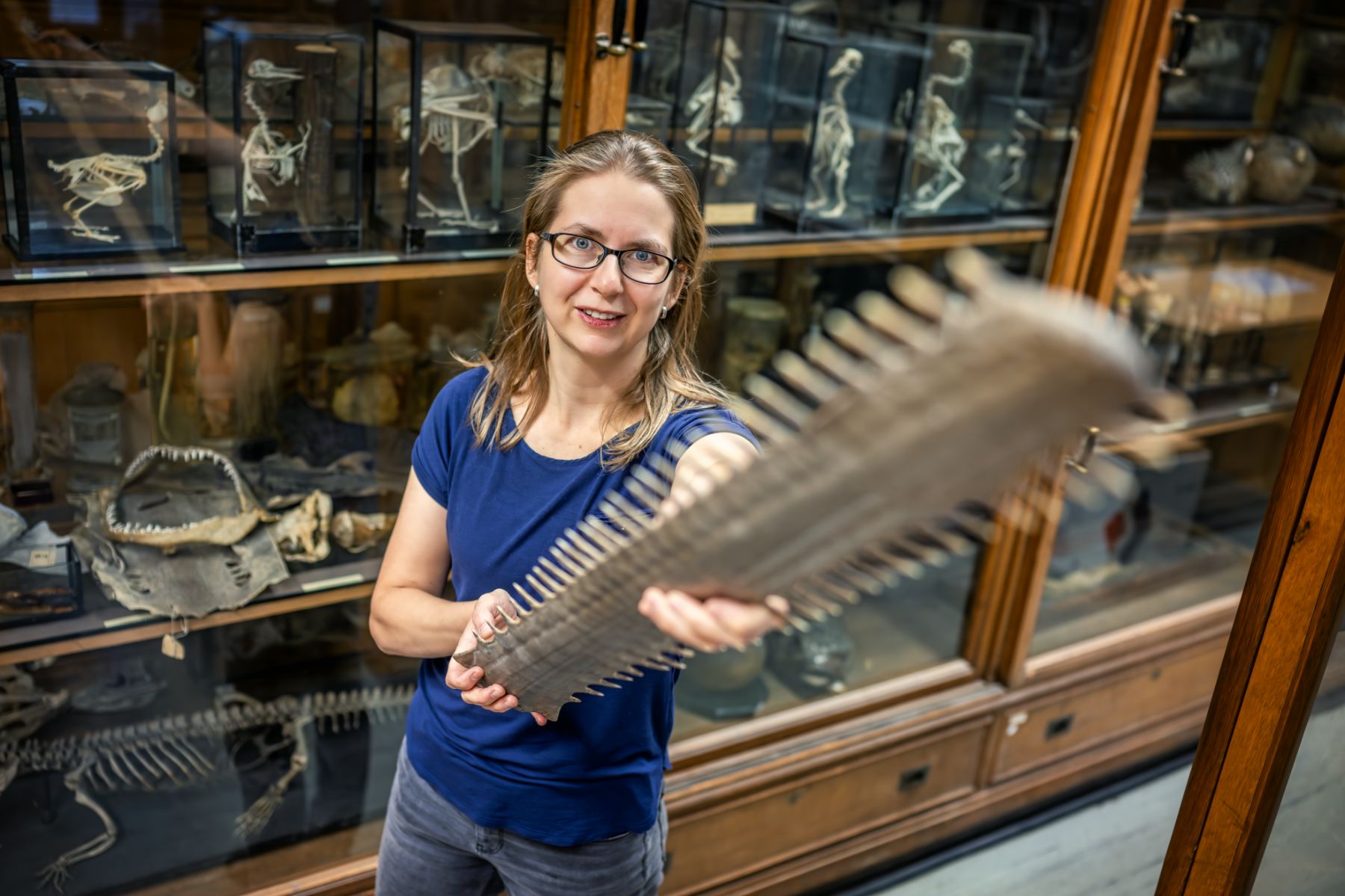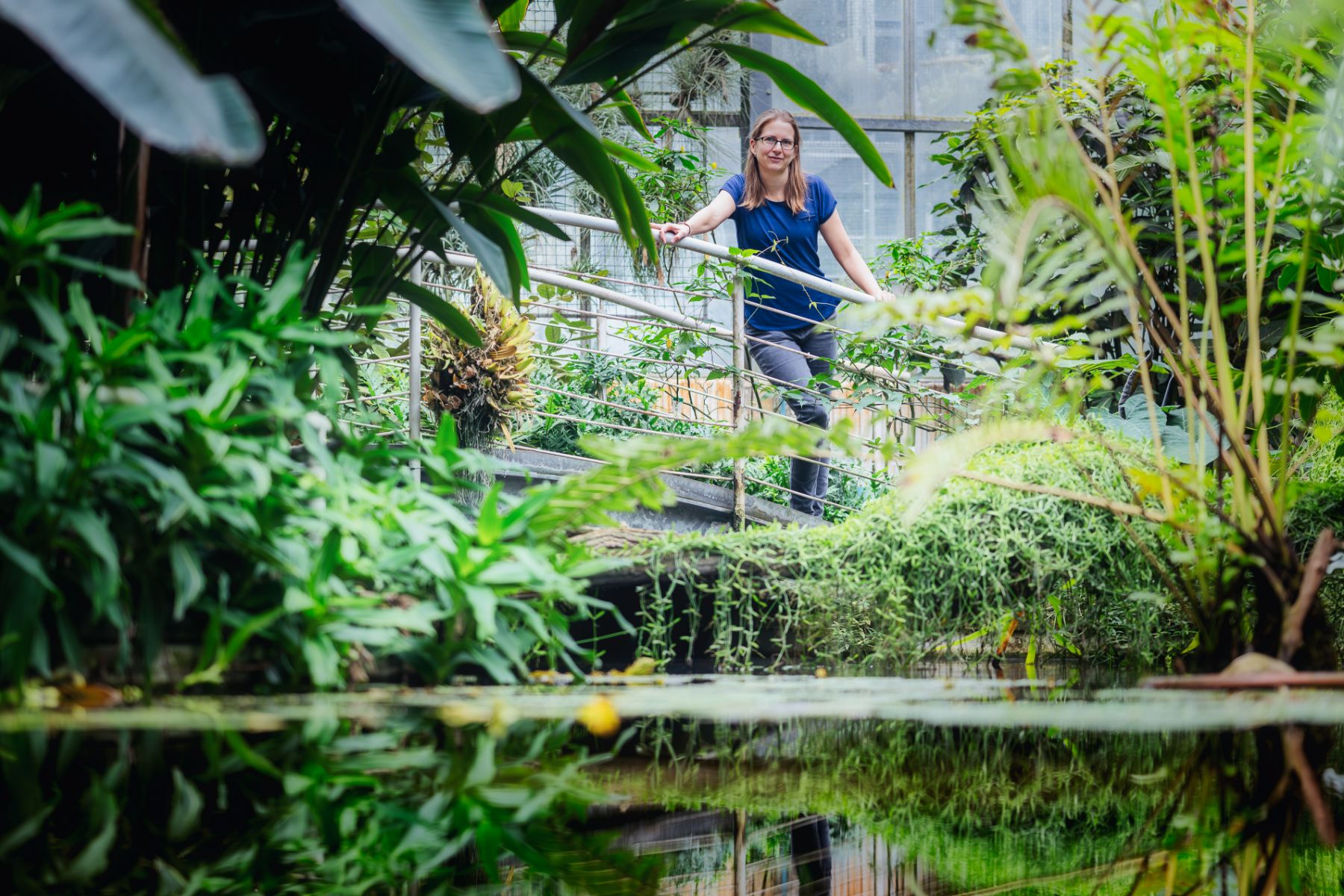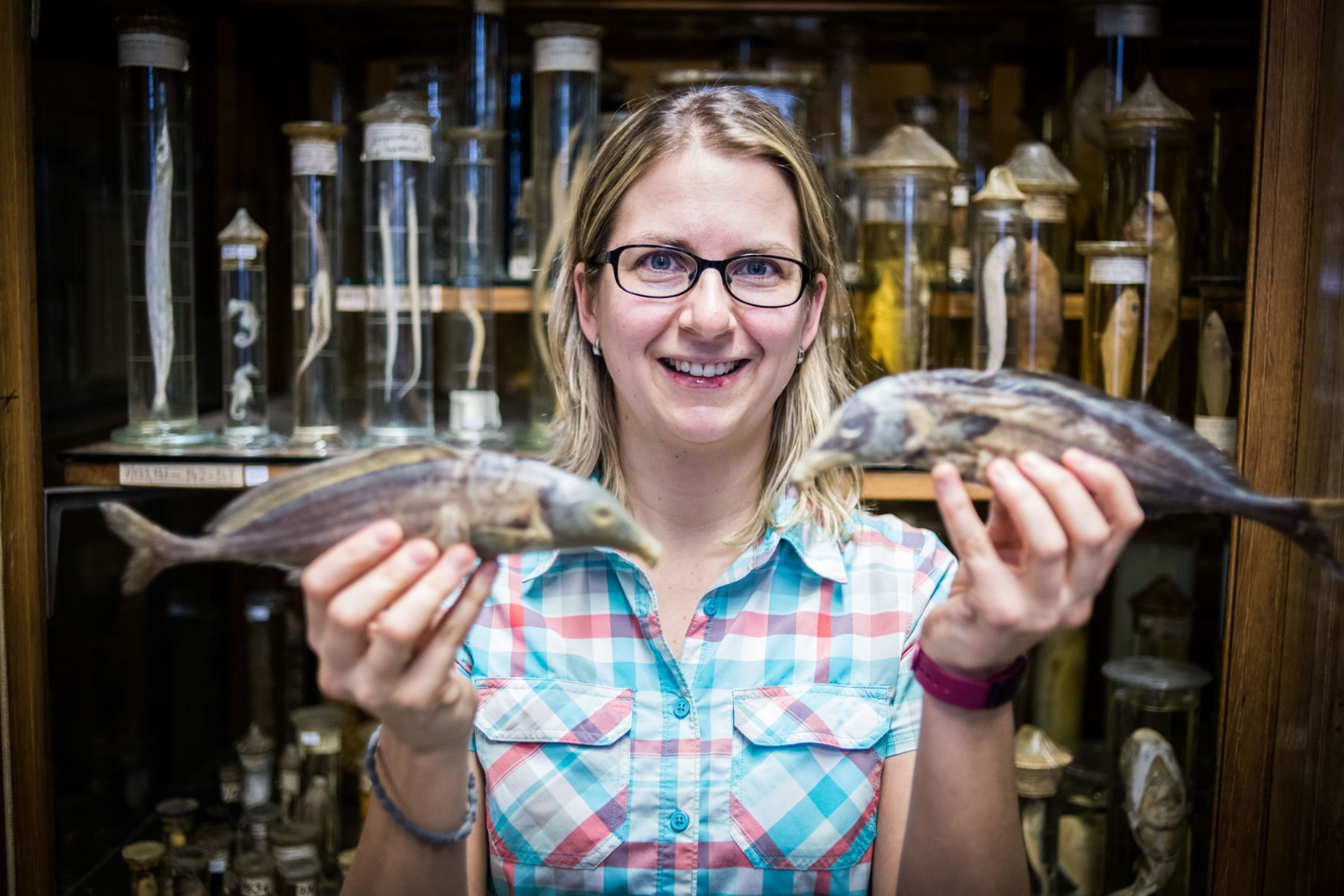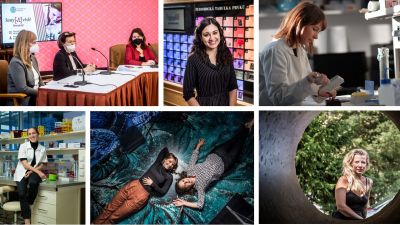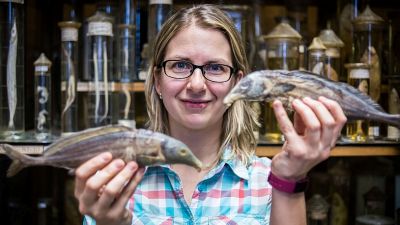"Our primary goal is to understand the limits of what the vertebrate eye is capable of! Most vertebrates have a very similar – evolutionarily conserved – eye structure. It is by studying extremes such as the eye of deep-sea fish that we can also learn many useful insights about the human eye, or gain inspiration for the design of telescopes, for example," says Zuzana Musilová from the Faculty of Science, Charles University, who has now been awarded a prestigious ERC Consolidator grant.
"Fish generally see much better than humans! Moreover, fish are an extremely diverse group of animals – they have evolved a number of 'oddities' through evolution. If we were to choose the ten greatest eye adaptations among all vertebrates – nine out of ten would certainly be fish," says evolutionary biologist Zuzana Musilová from the Faculty of Science, who is fascinated by research on the sensory organs of deep-sea fish, especially vision. Four years ago, her team managed to discover a unique set of pigments – rhodopsins – in the eyes of some deep-sea fish and even made the cover of Science magazine with their surprising discovery.
Now Zuzana Musilova has been awarded a prestigious Consolidator grant from the European Research Council (ERC). In the current round, her classmate Matyáš Fendrych, who is researching the plant hormone auxin, was also successful – more in a separate article.
"In the ERC project, we want to build on our previous results and find out exactly how it works - how deep-sea fish see. Thanks to recent advances in technology, we can now sequence RNA at the level of individual cells, which will allow us to study individual light-harvesting cells in the fish eye," the evolutionary biologist says.
What's it good for? "Our primary goal is to understand the limit of what the vertebrate eye is capable of! Most vertebrates have a very similar – evolutionarily conserved – eye structure. It is by studying extremes such as the deep-sea fish eye that we can also learn many useful things about the human eye or gain inspiration for the design of telescopes, for example," says Zuzana Musilová, citing the use of a chemical from deep-sea fish for the experimental treatment of glaucoma as a concrete example. The method of coping with high eye pressure seems to be universal. At the same time, the successful ERC grant holder admits that, although it may seem very unlikely at first sight, her research may one day have biomedical applications, even if this is not the primary aim of her research. "Our goal is really basic research – to understand the nature of how eyes work. But you never know if it's going to find some practical application one day," she says.
Do they see fish in color?
What do we already know about fish vision? "Fish generally see in colour and can usually see better than humans. Most mammals have only two colour channels, humans are better off – they have three – red, green and blue, but fish have four or five and can see in the UV spectrum, for example, or are able to distinguish much more detail in the blue and green spectrum. But we don't know much about how deep-sea fish see exactly," says Musilová, who is fascinated by the various adaptations of fish eyes to deep-sea life.
"Deep-sea fish have had to adapt to be able to detect photons more than six hundred metres below the surface, which are already very rare at such depths. This makes them better able to find food, mates or avoid predators," explains the scientist. In addition to morphological adaptations such as huge eyeballs or eyes that look like telescopes, these fish also adapt at the cellular and molecular level. "We've known for decades that some species, for example, have multiple layers of light-sensitive rod cells on their retinas that allow black-and-white vision. Other groups have extremely long rods. Some of the fish groups we are focusing on have several different rod rhodopsins, which could theoretically allow colour vision, which would be an exception among vertebrates – colour vision is otherwise always involved in cones. We are interested in whether deep-sea fish can see in colour and, if so, how," says Zuzana Musilová, who outlines two possible hypotheses.
"One possibility is that they can actually see in colour and are able to choose their prey according to what they like best, for example. Like the human eye, which sees in a colour spectrum from violet to blue, green, yellow and red, these fish could distinguish shades from dark blue to light green, for example. The second hypothesis is that they are not able to distinguish colours, but can detect light intensity across the whole colour spectrum," says the scientist, who would like to know the answer to exactly how this works at the end of the five-year project. "In a previous publication in Science, we described something new, but we didn't know what the molecular mechanism was at the level of the individual cell-targets. Now we want to understand that! It may sound like a small step, but if we can clarify that it's either colour vision or, conversely, a kind of 'super-vision' regardless of wavelength, then in both cases it will be totally unique among vertebrates," she explains.
Share a fish
The uniqueness of the whole project is the combination of state-of-the-art methods, unique designs and the basic human desire for knowledge. How does such research work? "The vast majority of the time I sit at the computer and analyse the sequencing data. Some of the work – preparing samples for sequencing – is also done in the lab, but I don't get there much these days and most of it is done by my handy students. The rarest and most important part is the field part of the research – catching fish at sea," says the scientist, who usually goes on expeditions in collaboration with other research teams.
"It's extremely exciting – you never know what you're going to catch," she describes. The spoils are then shared fairly. "It depends on which teams we meet on the boat – they are often interested in invertebrates or other species, for example, but we have shared eyes," recalls the scientist, who also admits that sampling will be one of the challenges of the project. "We have already collected some species, but beyond that it will depend on what we manage to catch - it's still field research, which carries a huge amount of uncertainty, but as biologists we have to take that into account," she says.
How do you know the function of the eye from the genes? "The problem with deep-sea fish is that we can't study them directly, we can't do experiments on their behaviour, so we focus on DNA and RNA analysis," says Zuzana Musilová. The advantage is that the structure of vertebrate rhodopsin is very well studied and it is known how which mutations affect the structure and therefore the ability and sensitivity of colour vision. This makes it possible to model and predict rhodopsin function even in animals that cannot be studied directly. "We are interested not only in the order of amino acids - the information in DNA - but also in the level of gene expression, or how much of which gene is used, which can be determined from RNA molecules," explains the evolutionary biologist.
Don't mess up the preparation
"I made my final submission of the grant in my postpartum period, which was possible mainly because of the fair division of care for my daughter with my husband – also a scientist. And thanks to the workshops organised by the Technology Centre of the Academy of Sciences, I had already written the project six months earlier. This is very useful because then you have enough time to improve it," says Zuzana Musilová, who appreciates the feedback the most. "The whole preparatory process is extremely useful for us applicants – from the beginning you get valuable feedback from people who have already received an ERC grant, been interviewed or been on evaluation panels. This helps you to rethink your research direction and what you want to focus on, but also to choose the right way to communicate," sums up a successful applicant who stresses that just an idea is not enough! "Careful crafting is just as important as the research question itself, and perhaps that is what determines the success of an application, because in the second round you are already meeting other applicants who all had a good idea."
Did she also use the services of experts in presentations or rhetoric? "No, no! That was a line I didn't want to go beyond. A colleague from Germany even told me that they hired agencies to do it, but I wanted to maintain authenticity and prepared the presentation myself. But I did a lot of editing just based on feedback from colleagues," says the scientist, who thought about writing the ERC project for more than a year. "Then when you start writing it up, a lot of things become clearer – for example, I found that my initial idea was too broad and would have been a bit of a mishmash. It was also thanks to the workshops and feedback that I decided to go for a simpler storyline," Zuzana Musilová recalls and recommends not to underestimate the preparation and not to slack off!
| Zuzana Musilová, Ph. D. |
| Zuzana Musilová comes from České Budějovice. She studied zoology at the Faculty of Science of Charles University. She did her dissertation at the Institute of Animal Physiology and Genetics of the Czech Academy of Sciences in Liběchov. Subsequently, she spent 4.5 years in Basel, Switzerland on a postdoctoral fellowship with Professor Walter Salzburger. Since 2015 she has been working at the Department of Zoology, Faculty of Science, Charles University. In 2020 she won the L'Oreal Prize for Women in Science and in 2021 she won the Neuron Prize for Young Promising Scientists in Biology. |


